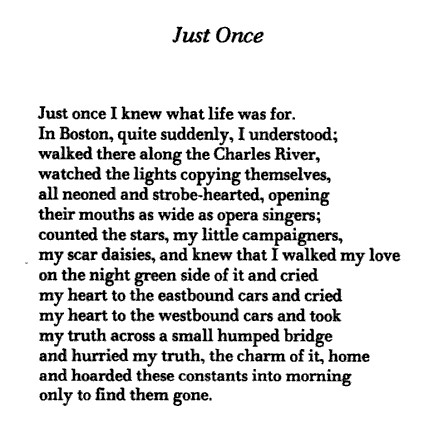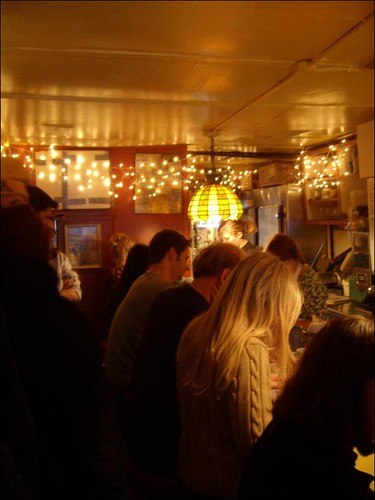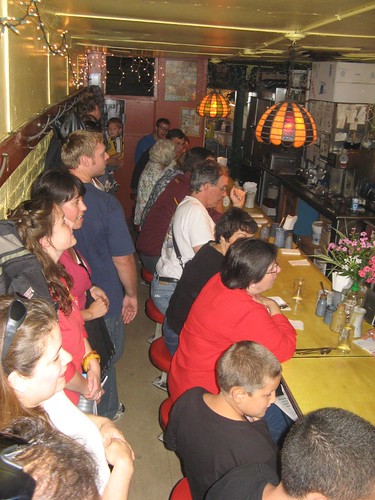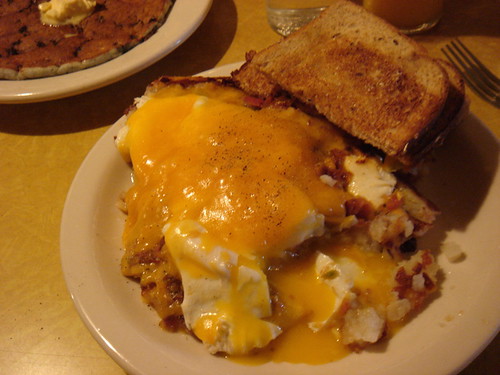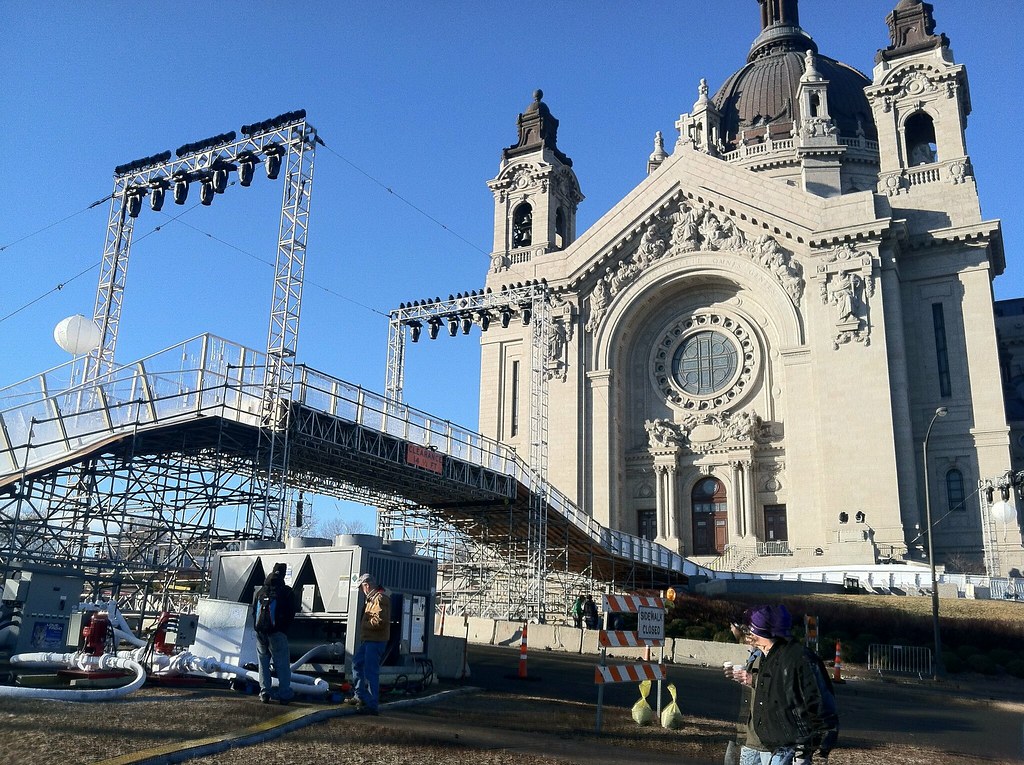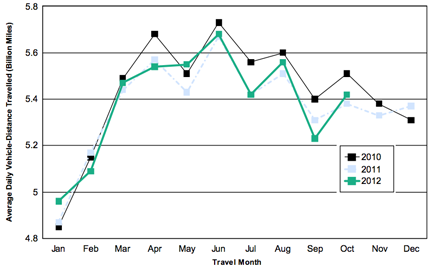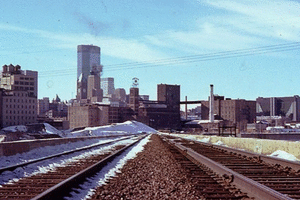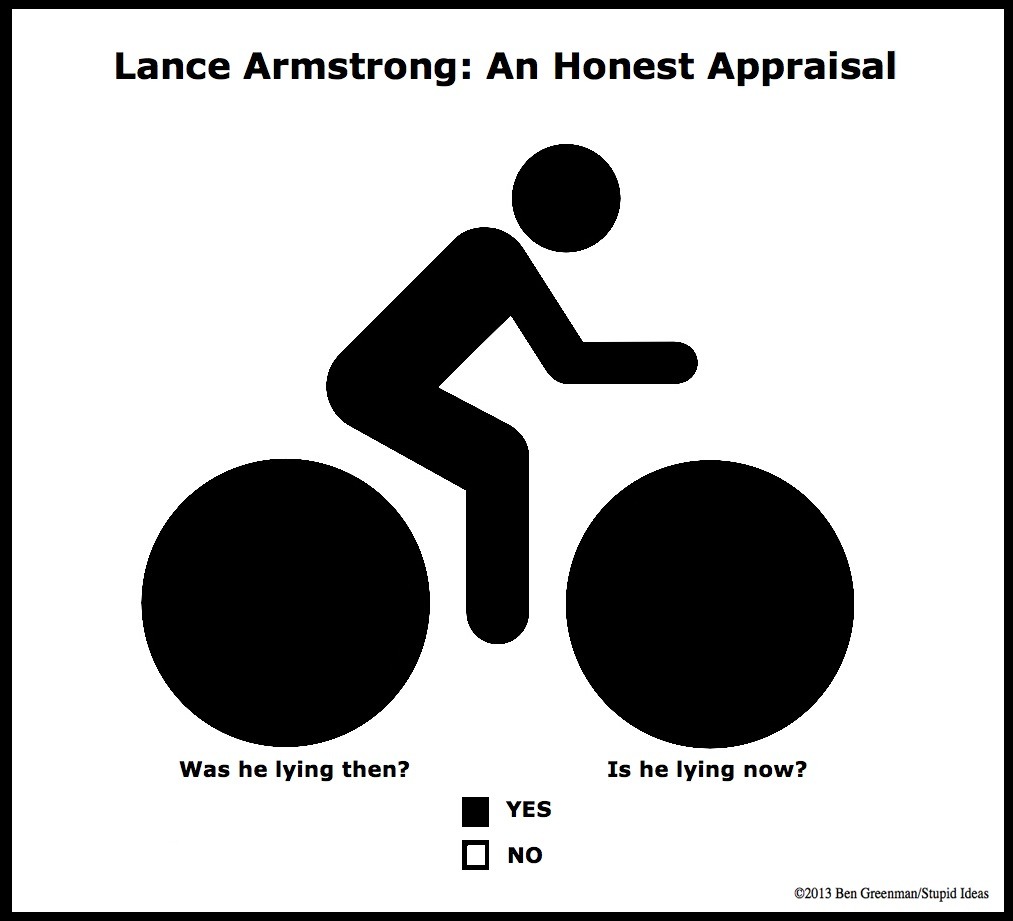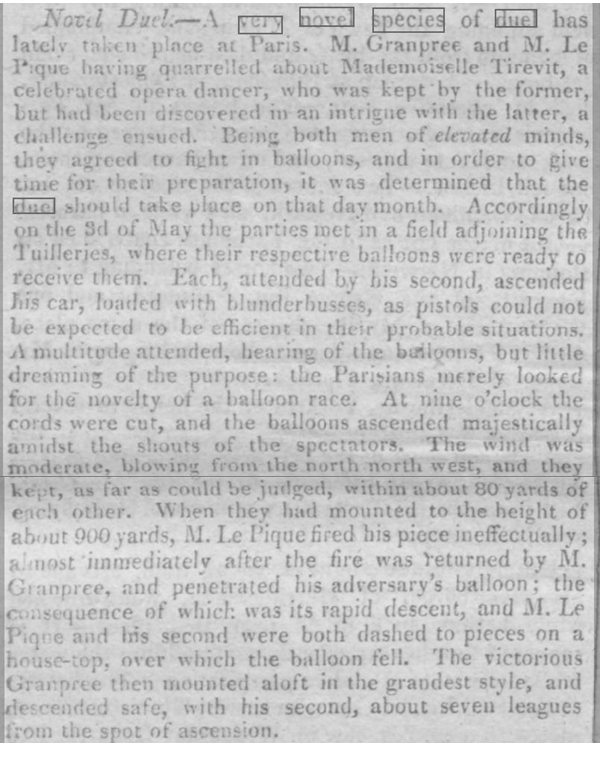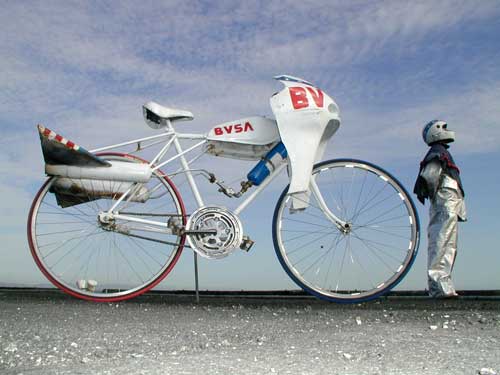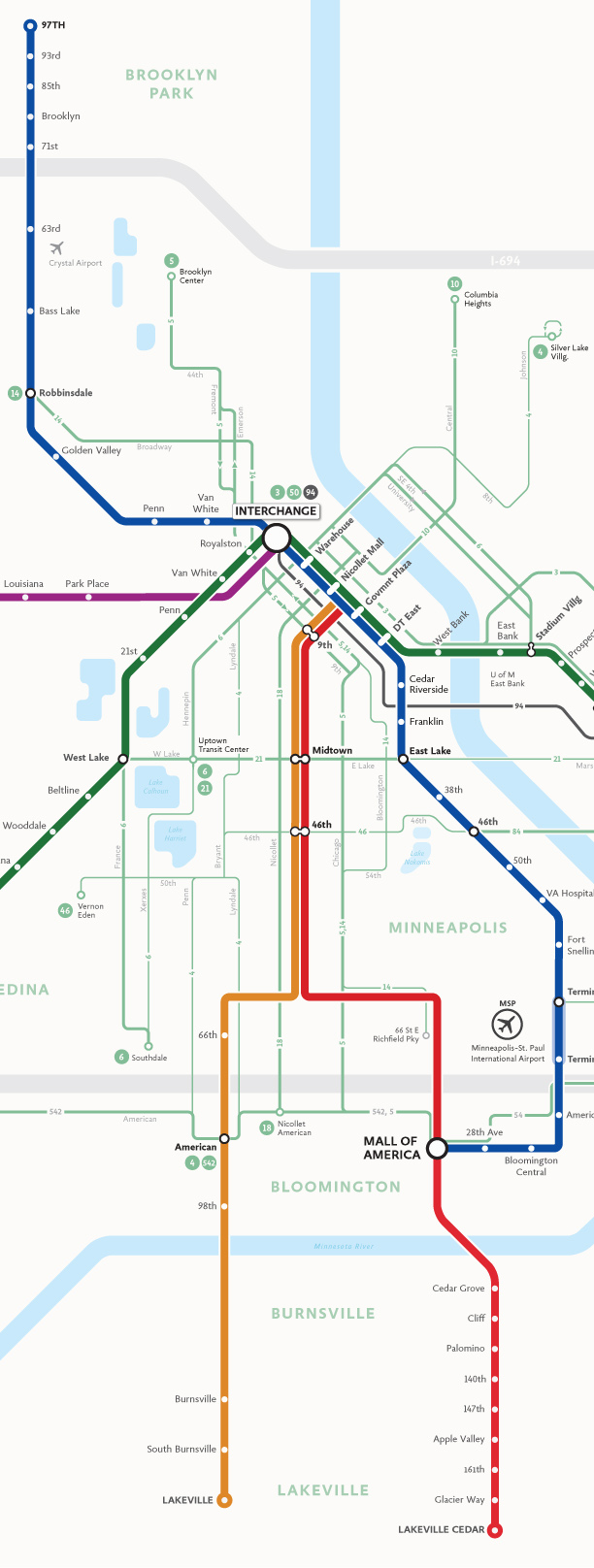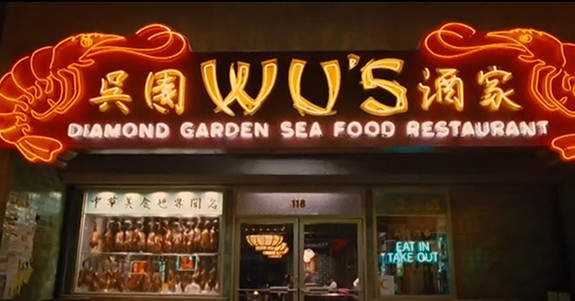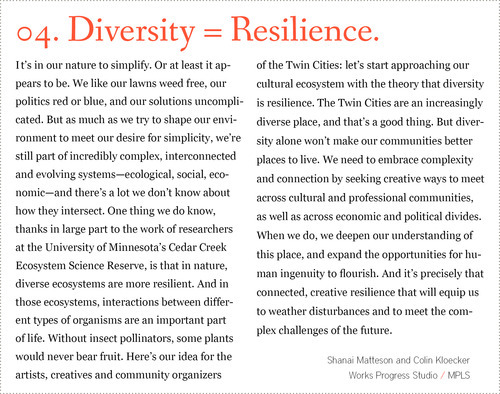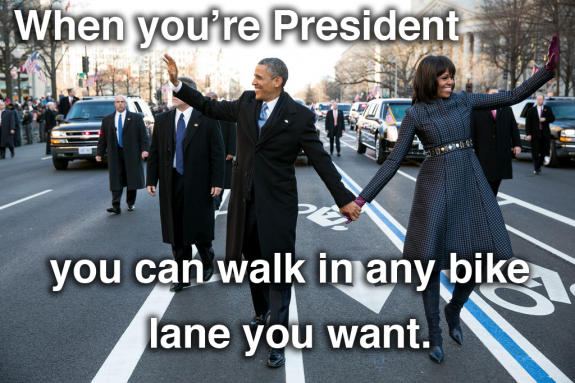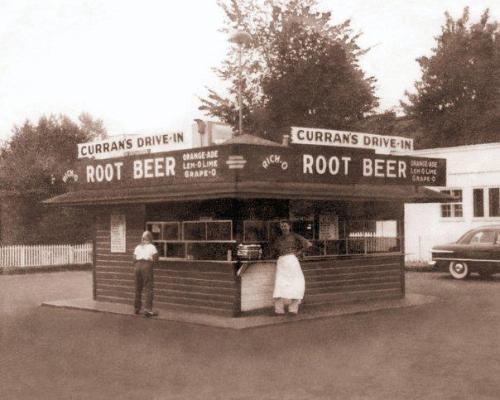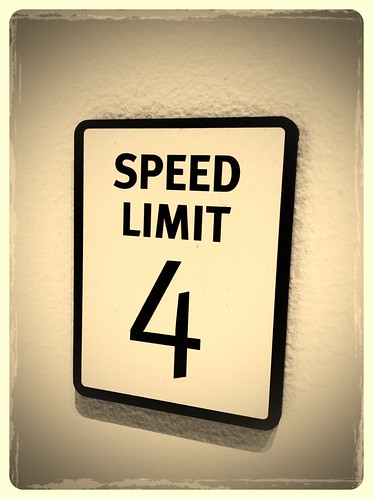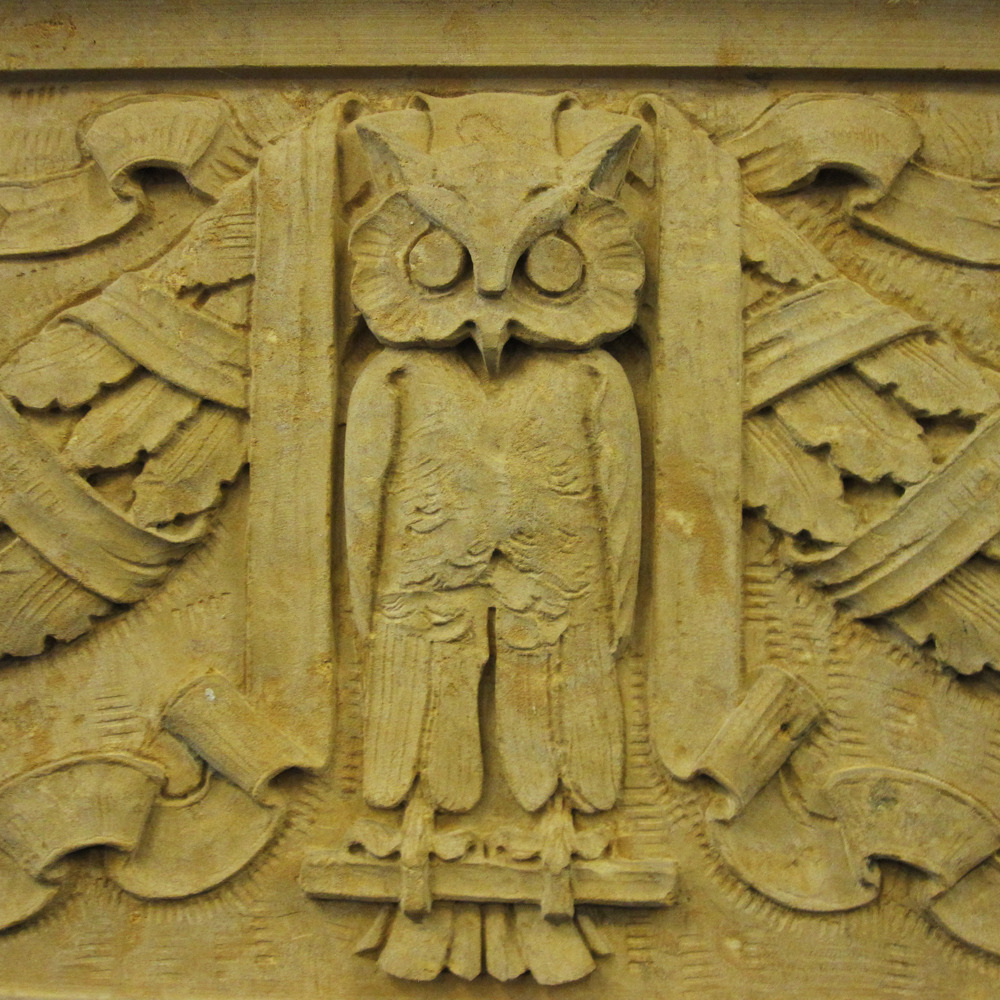| [St Paul's pre-war 6th Street. Note the presence of people.] |
Personally, I tend to lean slightly in the other direction. Given the destructive history of US postwar planning, looking to save what little historic fabric is left in our cities is important to me. The other advantage is that many of these pre-war buildings were designed really well. They have all the architectural features you look for in a walkable, rewarding urban environment: things like cornices, windows, and detailed brickwork that you just won't find in 60s era modernist schlock. (Preserving post-war architecture is another matter, and there it depends more on what kind of relationship the place or building has with the pedestrian realm. I actually like Nicollet Mall's Peavy Plaza, for instance, and would support remodeling and preserving it.)
 t t |
| [The hotly contested 6th St sidewalk. Note its narrow width.] |
The story is pretty simple. There's a great park in Lowertown St Paul, and its one of the few 'hot spots' downtown, one of the few places where new businesses are opening up and new residential development is taking place. This block along Mears Park, in particular, has become a spot with two or three thriving restaurants (all with names that start with 'b' for some reason). The owners of the two buildings along here would like to install sidewalk cafés during the (6!) warmer months, and are offering to foot 100% of the assessment for the city to remove their on-street parking and install a much larger sidewalk along the park. It's a rare moment when businesses volunteer both to give up on-street parking, and pay for improvements to the pedestrian realm.
The plan has met opposition from an influential and cantankerous former downtown developer, and from the farmer's market (located 2 blocks away) due to concerns about the loss of parking. The arguments, particularly the ones about financial loss to the city, are pretty specious (and I may write about them someday). The Planning Commission decided that they didn't even want to decide on this issue, becuase it was a property rights matter. But then, last week, the city Heritage Preservation Commission voted overwhelmingly against the plan, due to issues around setbacks. Here's how the commission explained it:
“HPC staff, they are more concerned about the visual impacts,” said Heritage Preservation Commission chair Richard Laffin, who did not cast a vote (he typically only votes when there’s a tie). “There’s a very strong set of setbacks throughout Lowertown that this would encroach upon. It’s all those odds and ends that would project eight feet further as you look down 6th street — trees, light standards, bus stops. Lowertown, the aesthetics are characterized by consistency.”
 |
| [An example of a historically acceptable plaza expansion from New York.] |
Extreme Historic Preservation
 |
| [The plaza outside St Paul's remodeled Union Depot.] |
As you probably know, the city got a large Federal grant to completely remodel the Lowertown St Paul train station. In fact, the money was tied to a historic preservation mandate, so that everything about the remodeled station had to conform precisely to its 1928 specs. (This includes the plaza outside, which can contain no "permanent" structures, and currently feels a bit empty.) Spending time in the Union Depot today feels eerie precisely because the historic preservation is done so well, except for one big difference: there are zero people inside. You can sit in the giant waiting room for hours and you'll only glimpse an occasional wanderer, a few sneaker-shod "mall walkers", and the guy with the floor polisher going endlessly back and forth around the huge room. They've preserved the space so well that there isn't any room for actual 21st century people, or so it seems. It's like the station has been embalmed.
(I'm very hopeful that this will change once the once-a-day train starts running through here a year from now. I'm hopeful, too, that the plaza outside will get some street furniture, café opportunities, and a food truck or four to liven it up. There's a management company hired to run the plaza and services in the depot. But currently, none of those things have happened. Sitting in the building feels like a being swallowed by a ghost whale.)
Historically, Cities Were Filled With People
| [Pre-war 6th Street. Again with the people thing.] |
A real effort at preserving the heritage of Lowertown would think about this context, and try to bring back some of the streetlife that made this part of the city so vibrant in the past. Rather than embalming our cities, we should be bringing them to life. We should apply the defibrillator thingies, shout "Clear!" and shock our soporific sidewalks into action.
| [More people on 6th Street, walking and stuff.] |
The final irony of the situation is that cities around the country are clamoring for opportunities to add sidewalk cafés, to turn US streets into places more like Paris, lined with tables of people sipping coffee watching others enjoy the park across the street. Mayor Coleman gave a speech just yesterday about how he wants St Paul to be more relevant, that the city should "no longer be flyover land" (as he put it). This is the perfect opportunity to add a much needed quality public space to our downtown, and at almost zero cost to the city. Years from now, if this passes through the City Council, these sidewalk cafés will be on every list of "best places to eat" in every magazine in the Twin Cities. In my opinion, to let this project get derailed due to misguided concerns over historic setbacks would be a real shame. It would be missing the lively forest for the petrified trees.
| [6th Street along Mears Park back in the early 20th century, w/ people &c. All imgs fm MNHS.] |
























